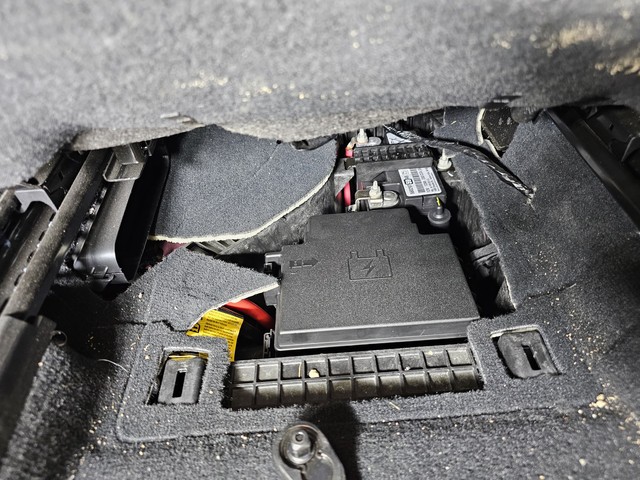The 2021 Jeep Grand Cherokee, equipped with the Engine Stop/Start (ESS) system, features two batteries. Knowing their locations is crucial for jump-starting or replacing them. This guide clarifies the battery placements for various 2021 Grand Cherokee models.
Battery Placement in 2021 Jeep Grand Cherokee Models with ESS
In 2021 Jeep Grand Cherokees with the 3.6L engine and ESS, you’ll find two batteries:
- Auxiliary Battery (ESS Battery): Located under the passenger seat. This is a smaller 12V battery, often referred to as the auxiliary or ESS battery. It primarily powers the vehicle’s electrical systems when the engine is off during an ESS stop event, preventing power loss to essential components like the radio and powertrain computers. This ensures a smooth restart when the engine turns back on.
- Main Battery: Situated under the driver’s seat. This is the larger, primary battery responsible for starting the engine and powering the vehicle’s overall electrical demands. The size of this battery varies depending on the trim level. Laredo and Limited models typically use an H6/48 AGM (Absorbent Glass Mat) battery, known for its durability and performance. Higher trim levels like Overland and Summit generally come equipped with a larger H7/94R battery to handle increased electrical loads.
Battery Placement in 2021 Jeep Grand Cherokee 4xe
The 2021 Jeep Grand Cherokee 4xe, a plug-in hybrid model, has its high-voltage battery pack located in the rear of the vehicle, underneath the cargo area. This battery powers the electric motor and contributes to the hybrid functionality. It’s important to note that the 4xe also has a 12V auxiliary battery, likely located in a similar position to the ESS-equipped models, to power accessories and maintain essential functions.
ESS System and Battery Operation
The ESS system connects both batteries except during an ESS stop. During a cold start, both batteries contribute cranking power. In a stop event, the auxiliary battery maintains power to vital systems, preventing voltage drops and potential issues. Testing confirms that both batteries remain connected even with the vehicle off and the ignition on. An Intelligent Battery Sensor (IBS) on the main battery’s negative terminal monitors the current draw, indicating the interconnectedness of the two batteries.
Addressing Concerns About Short Trips and Battery Charging
A common misconception is that short trips don’t adequately charge the batteries. This is inaccurate. The alternator adjusts its output based on the battery’s state of charge. When the battery is low, the alternator provides a higher voltage and current to recharge it quickly. This ensures sufficient charging even on short trips. The deeper the discharge, the faster the recharge rate.
